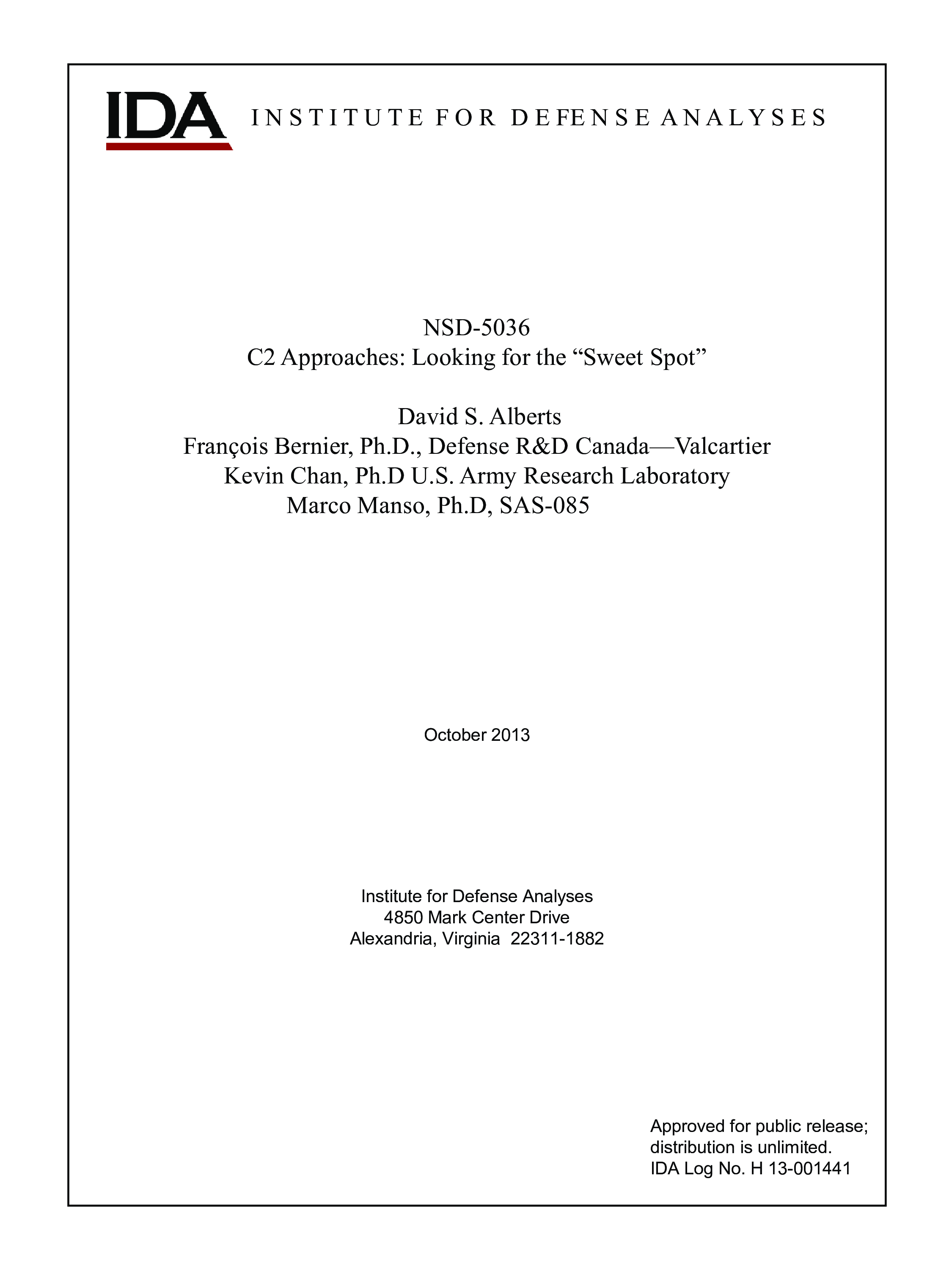NSD-5036 C2 Approaches: Looking for the “Sweet Spot”
October, 2013
IDA document: D-5036
FFRDC: Systems and Analyses Center
Type: Documents
Division: Strategy, Forces and Resources Division
Authors:
IDA document: D-5036
FFRDC: Systems and Analyses Center
Type: Documents
Division: Strategy, Forces and Resources Division
Authors:
Authors
David S. Alberts, François Bernier, Ph.D., Defense R&D Canada—Valcartier, Kevin Chan, Ph.D U.S. Army Research Laboratory, Marco Manso, Ph.D, SAS-085
See more authors

